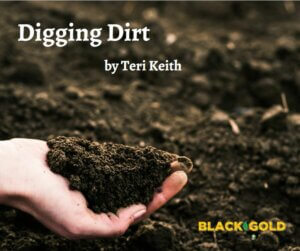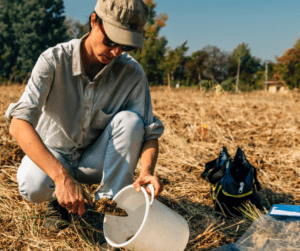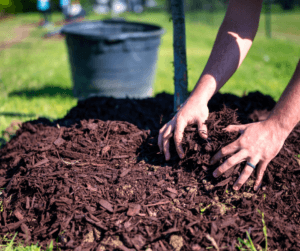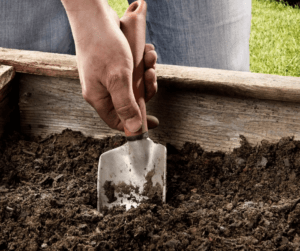
Soil is the heart of your garden. Wherever you decide to set up a garden, you should know that there may be soil factors or problems that you will have to deal with in order to get the most benefit and enjoyment from your efforts. Soil is what is left behind after a long and complex interaction of sun, wind, water, and plant life and soil organisms on some sort of parent material. The latter could be the native bedrock, materials deposited by wind and water, organic material and so forth.
Most undisturbed soils have distinct, well-defined layers that taken together form a soil profiles. These extend from the ground surface down to native bedrock or to a depth at which soil formation processes are no longer active. Soil profiles describe individual soil types, and provide information regarding fertility, texture, and color, and organic content, moisture holding capacity, erosion potential, chemical characteristics, and suitability for various land uses.
In the United States, soils are the province of the U.S. Department of Agriculture (USDA). The USDA provides services not only for farmers, but to gardeners as well. In most U.S. locations, USDA maintains a county or regional presence through Natural Resources Conservation Services (NRCS) offices. These are often excellent sources of local soil information in your area such as soil maps, soil descriptions and other resources such as soil testing.
A soil profile is typically displayed as:
- O Horizon This is seldom present in recently disturbed soils. The O Horizon provides a habitat for small invertebrates and fungi that process dead organic materials (detritivores), and enrich the soil.

- A Horizon (Topsoil) The A Horizon is true soil in which most seeds germinate. It reaps the benefits of O Horizon detritivore activity plus the activity of earthworms that carry bits of dead organic material into the soil to feed, aerating and further enriching it.

- B Horizon (subsoil) The subsoil is just below the topsoil and just above the C Horizon or native bedrock. It contains fewer soluble minerals and less organic material than topsoil, but it is also a place of deposition of soluble minerals and mineral salts.
- C Horizon This layeris devoid of any organic material and is made up overwatered broken bedrock.
In most cases it is preferable to make the best of the soil you have. It came with your house, you own it and you need to take care of it. Using deadly chemicals to control weeds, bugs, moles and other annoyances can backfire by killing off beneficial pollinators, beneficial soil bacteria and fungi; detritivores that eat dead organic material and earthworms, not to mention songbirds and small mammals. Bringing in topsoil is expensive. The soil may have been to keep the cycle going illegally stripped from another building site.
Any kind of topsoil can be transformed into healthy garden soil with dedication and work. Organic matter needs to be replenished frequently to keep the cycle going.
Here are some ways you can improve your soil.
- Get a soil test Have your soil tested at the beginning of your project, then every few years thereafter to determine what additional nutrients are needed to promote plant growth and production.

- Add Compost posed organic material, and it is a wonderful soil additive to improve soil structure, enable them to better retain nutrients and water and keep the soil loose.
- Mulch Mulching the soil surface helps to keep the soil cool and reduce moisture loss from evaporation.

- Avoid soil compaction Soil that is hard and compacted will inhibit seedling growth. This can be alleviated by breaking the garden up into smaller beds connected by footpaths.
- Rotating cover crops. Planting cover crops of nitrogen fixing plants like clover or alfalfa on a portion of your garden beds. This will benefit the doily by increasing fertility. After overwintering, these annual plants will act as mulch

In addition, don’t forget that Black Gold® has a complete line of soil amendments, soil conditioners, and specialty potting mixes. Black Gold® is your indispensible ally in caring for the heart of your garden.
